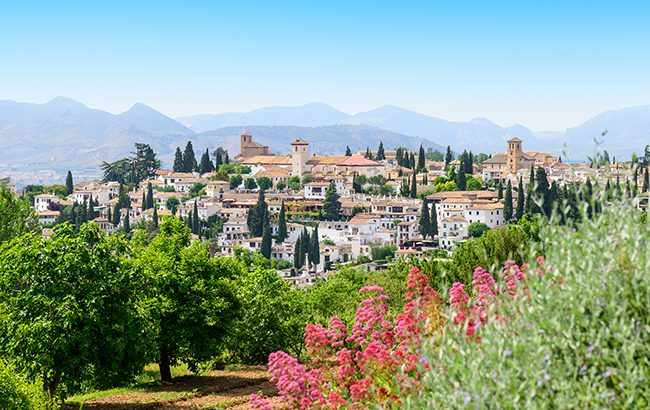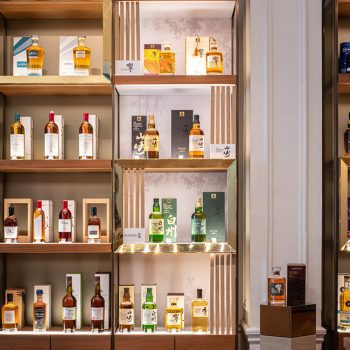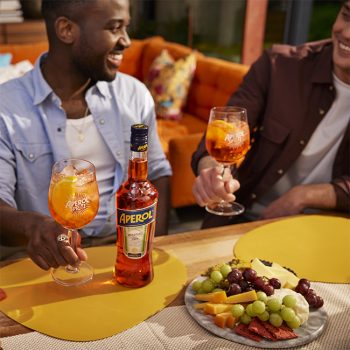Bussiness
Taking the temperature of Western Europe – The Spirits Business

The Western Europe region has come out of pandemic lockdowns with an unquenchable thirst for spirits.

*This feature was originally published in the June 2024 issue of The Spirits Business magazine.
When you tot up the number of bars, clubs and restaurants in the country, Spain is in a class of its own. “There are approximately 240,000 on-trade outlets, which is huge, it’s one of the biggest in the world,” says Sébastien Mouquet, CEO of Pernod Ricard Iberia. Of course, such a nightlife-dependent spirits market was crucified by the pandemic at the time, but its recovery has been impressive.
“The on-trade’s coming back, but it’s not yet at the level of pre-pandemic,” says Mouquet, who witnessed the surge of Spaniards desperate to go out and socialise after months of lockdown. “Our last fiscal year was a record for Pernod Ricard Iberia, but this year the on-trade has been suffering a little bit more with the same issues as everywhere affecting consumer confidence.”
He estimates there may be 10,000 fewer outlets in Spain than in 2019, for two reasons. “First, because some businesses haven’t been able to reopen, and second because there have been some difficulties finding people to work in the on-trade. Many people have discovered a new life after Covid, and they’re not looking to work at night or during the weekends.”
Dampened demand
Inflation has clearly dampened demand. “For example, the price of a ‘copa’ [glass] of Ballantine’s and cola, which is a kind of reference drink in Spain, has gone up by 16% in two years, which is a lot,” he says. “People are still going out quite a lot, but they don’t have the same money to spend. Someone who would have had three copas on a party night, may now only have two.”
Helped by the good weather, and boosted by tourism, the country’s night-time economy motors on. “I think Spain has the record, with 12,000 nightclubs, so the night is still a huge part of consumption,” he says, and this naturally favours the big spirit categories. According to Mouquet, in overall spirits in Spain, “whisky’s got a little bit more than 25% of the market, gin’s about two or three points below, and then you have rum. Those are the big ones, and they remain quite stable.”
Scotch whisky is still the biggest category in the country, and although shipments declined by 14% in volume last year to the equivalent of 58 million bottles, the value was up by 7% to £184 million (US$234m), just £4m more than in 2019. Overall, it’s the sector’s eighth most valuable export market, and, as ever dominated by bottled blends. Just 1.7m bottles of single malt were shipped in 2023, which Mouquet puts down to the way the Spaniards like to drink their whisky with Coke, which is even true of premium 12-year-old blends like Chivas Regal.
Ignacio Navarro, Diageo’s southern Europe marketing director, whisky, rum and ‘luxury’, makes the bold claim that in Spain, “all standard whisky brands are losing market share to Johnnie Walker Red, which has been growing share for the last three years”. That said, the main marketing focus, here and elsewhere, has been on Johnnie Walker Black Label, which he says is “becoming the drink of music festivals in Spain”.
The country is also the biggest market for Diageo’s Cacique rum, and for Pernod Ricard’s Beefeater gin. Mouquet accepts the gin category here has been “suffering for the last two to three years”, but says: “Beefeater is stabilising, and gaining market share again.” The brand has been helped by two recent range extensions; alcohol-free Beefeater 0.0%, and the thyme and lemon verbena-infused Beefeater Black.
France, meanwhile, remains Scotch whisky’s biggest export market by volume, albeit half as valuable as the US. Scotch shipments to the country were worth £474m (US$603m) last year, down by 3% on 2022, and within that, bottled blends accounted for US$195m, while single malts were on US$213m. The value of blends has slumped by US$127m in a decade, while malts have risen by US$147m.


This may well reflect the way in which the spirits market has become increasingly spolarised, something Anne Miller, Suntory Global Spirits’ new general manager for France has noticed. “There is polarisation with a lower price per purchase on one side in the modern off-trade, but on the other, there are people seeking premiumisation.” She took up her role in January when the Japanese group finally took its French distribution in-house. Previously it was handled by Campari.
Premium portfolio
Miller’s mission is to build a leadership position in premium whisky in France, and she has a portfolio of Japanese, American, and Scotch brands to play with. “When you look into the ‘prestige’ category, Japanese whisky makes up almost 40% of the value, and is forecast to grow at almost 30% compound annual growth rate (CAGR) until 2027.”
She adds: “House of Suntory aims to lead the category within three years, hopefully.” Given its near total dominance of Japan, it may sound surprising that Suntory is not already leader. It certainly has the range, with its aged expressions of Yamazaki, Hakushu, and Hibiki for the on-trade and independent liquor stores, or caves, and its mainstream blend, Toki, for the French supermarkets. Then, having secured the distribution, Miller says: “Our aim is to build the desirability of our brands, speaking about the quality and all the know-how and craftsmanship.”
The company’s top-selling brand is Jim Beam Bourbon in the modern off-trade, but Miller and her team are keen to build Maker’s Mark Bourbon, whose two main expressions – Classic and the 46 are already in the caves, and to grow the market for premium Bourbon. In Scotch, Suntory is focused on its single malts. Laphroaig has a strong footprint in the modern off-trade, leaving Bowmore, which Miller says is “on its journey of premiumisation”, for the caves.
She acknowledges that these bottle shops are “under cash pressure”, but feels the squeeze is more on wine, noting that the country’s biggest chain of caves, Nicolas, has therefore increased its shelf space for spirits. As for the on-trade and how it compares with 2019, she says: “We are almost there in value, but not in volume, and I’m not sure we will be back. What is quite good for France is maybe we have more connoisseurs.”
Summer of sport
The summer is always peak season for apéritifs, and this year it is being boosted by Europe’s season of sport, with Germany hosting the men’s European football championships, followed by the Paris Olympics in late July. “It is good for us,” says Campari’s new CEO, Matteo Fantacchiotti. “We’re not sponsors, but we have plans. Our French team has been all over it to make sure that during the Olympics Aperol will be visible and activated in every corner of the city.”


Aperol, which accounts for 24% of Campari’s net sales, tracks its per-capita consumption in relation to beer in key markets like France, where it is on 0.25% of beer, and Germany where it is on 0.2%. Any tiny increase in those figures represents a huge gain for Aperol, whose biggest market is, naturally, Italy with a 28% share of net sales in 2023, followed by Germany on 20%, where the brand enjoyed organic growth of 32.9%. Inevitably it faces plenty of competition, not least from Bacardi-owned Martini, which has just launched its Dare to Be campaign in Spain and the Benelux countries, and which will soon be rolled out to Portugal and Italy.
Tine Van Nevel, Martini’s European brand director, claims it’s the brand “with the biggest awareness within apéritifs”. She describes Europe’s apéritif market as “very healthy”, and says: “It has been in growth now for about 10 years, and Covid accelerated it.” In her view, drinking patterns have moved earlier since the pandemic. “Everybody has a very busy life and wants to not only work but spend time with friends, and also perform again the next day. If you stay up after midnight, that performance becomes more tricky.”
Connected to this has been the growth of no-and-low ‘spirits’, a sector Martini entered with its zero-ABV Floreale and Vibrante expressions in 2020. Van Nevel reckons: “The majority of consumers flip between alcoholic and non-alcoholic versions. There’s about a 70% overlap from what we see from our research in France.” In the ready-to-drink (RTD) space, meanwhile, Bacardi has just launched a pair of canned cocktails in Belgium – Bellini and Mimosa – while in Germany and the UK, Suntory has rolled out -196˚C, a hugely popular RTD brand in Japan, into Germany and the UK.
And, finally, a word on high-end Tequila in the region. Ignacio Navarro mentions Diageo’s new European Agave Centre of Excellence, and points to IWSR Drinks Market Analysis data predicting 30% CAGR growth for super-premium Tequila in southern Europe (2022-28). “The opportunity is enormous,” he says. “Our goal is to lead the acceleration of agave in the region.” Diageo has identified the Paloma cocktail as a key driver for Tequila in Europe, but the company is not alone. Campari is pursuing the exact same strategy with its Espolòn brand and the ‘Espaloma’.
Which markets in Western Europe are you seeing perform particularly well at present?
Søren Hansen – sales director, Bemakers
“Bemakers’ brand partners are performing well in the Nordic on-trade market. The on-trade sector in the Nordics significantly influences demand in other channels, such as e-commerce and the off-trade. The thriving on-trade scene in larger Nordic cities is receptive to new, innovative products, giving new brands a good chance of establishing themselves here.”
Which are your key markets in Europe, and why?
Armina Demon – co-founder and COO, 9Meadows
“As a young start-up in Switzerland, our launch market was, naturally, Switzerland. We then focused on Germany due to its proximity and the growth of the category there. But we see even more potential in the UK and Spain. As the category is growing quickly, we believe other European markets will develop traction as consumers gain awareness.”
Related news
Mataroa Gin features at Roma Bar Show










